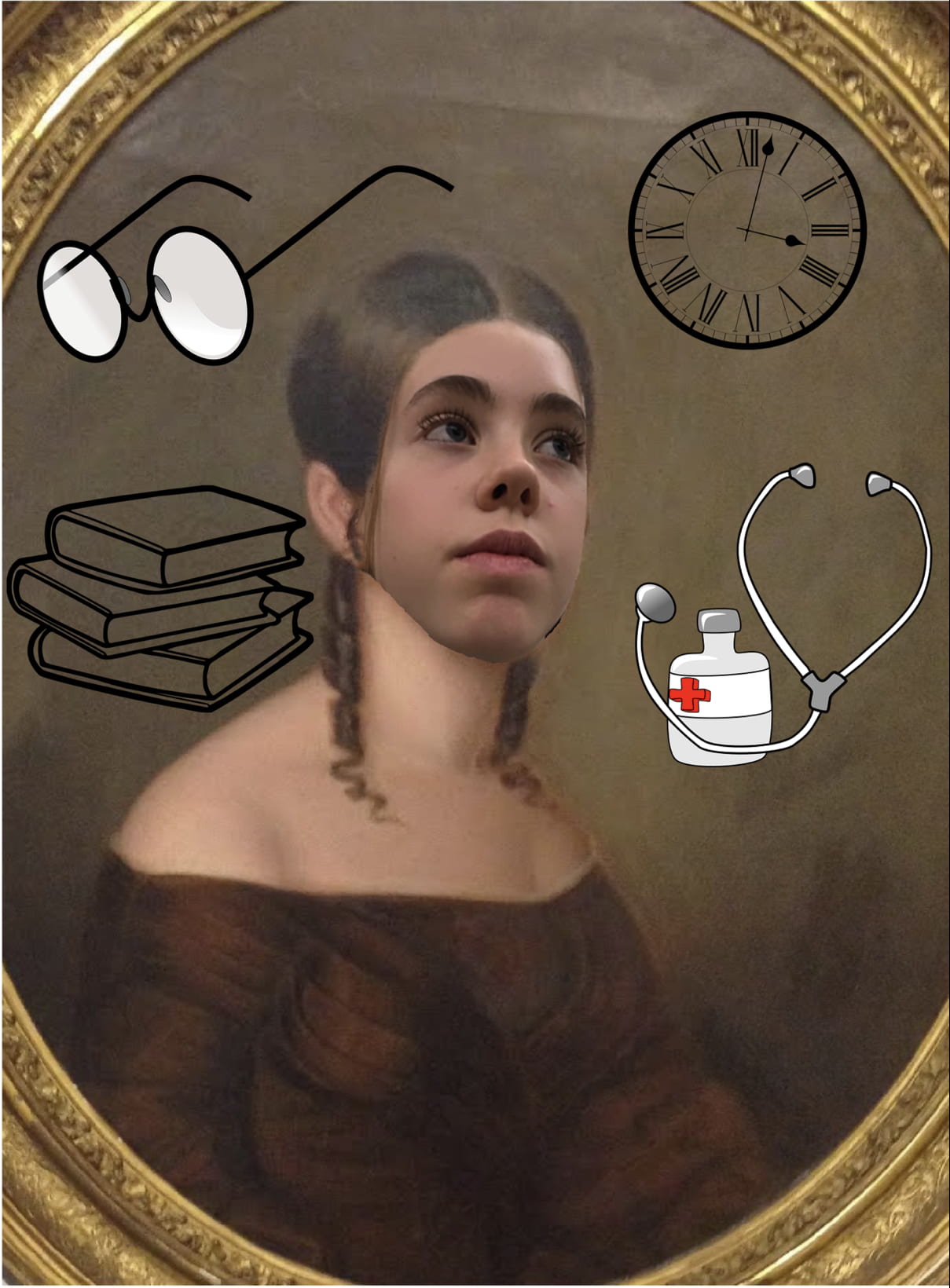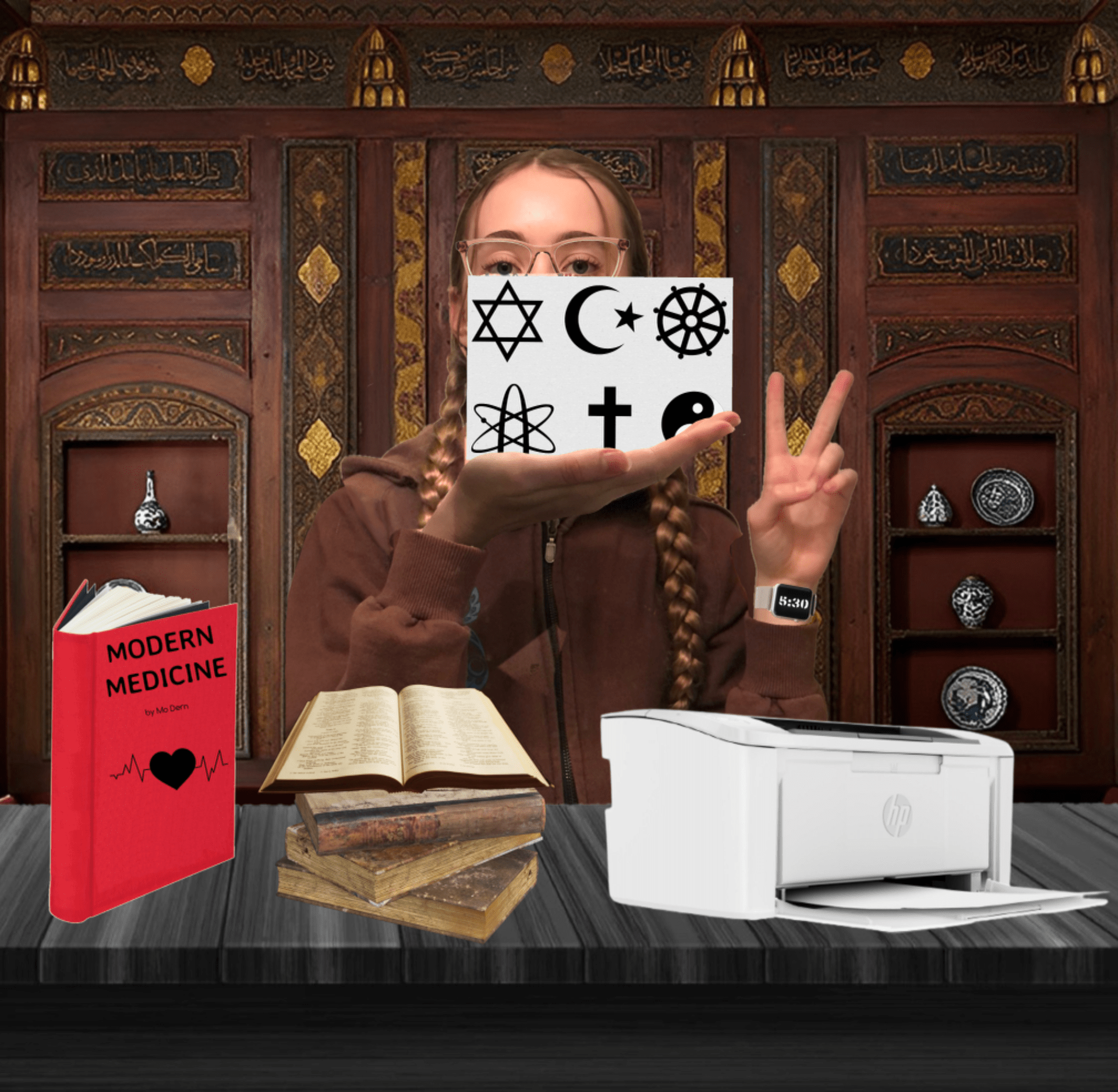
INTRODUCTION
Ideas from Europe and Asia changed the world by creating more opportunities and making lives better all across the world. From few religions to diverse religious choices; basic and often superstitious to advanced scientific medicine; reading stones to glasses; hand-copying to modern printing presses; and sundials to clocks or even watches, simple innovations of the past have become incredibly advanced. Over time, these ideas have greatly impacted our world and our lives would be so much different without them.
RIGHT PANEL
Though these innovations were just the start to what they have become today, they already began changing lives mostly for the better. During pre-Renaissance times almost everyone in the Renaissance world followed the catholic religion, therefore giving the church lots of power. Medical understandings were not very advanced, people believed that the body was made up of four humours (yellow bile, phlegm, black bile, and blood) and each of those humours was controlled by an element (earth, water, fire and air). Reading stones (usually round glass or crystals) monocoles were used to enlarge text. During these times, everything had to be copied by hand, which was exhausting and time consuming. Techniques like the sundial were used to measure time, however it wasn’t very accurate yet. Despite being fairly basic, these innovations were very important building blocks for the future’s innovations.
LEFT PANEL
Ideas from past times developed further during the Renaissance to become a step closer to the impactful innovations that they are today. During the Renaissance, a man named Martin Luther began protesting against the church’s indulgences, starting the reformation as well as Lutheranism (the branch of Protestantism specifically following Luther) and eventually causing the Church to begin a series of reforms. Some of the first medical schools and hospitals emerged, along with several medical books written by Muslim surgeons, one of which was called The Canon of Medicine (English translation). The first eyeglasses consisted of two attached curved glass lenses, which later led to the inventions of microscopes and telescopes. Printing presses were also invented during this time, mostly replacing the hard work of hand-copying. And finally, mechanical clocks were invented, bringing the first accurate measurements of time. All these innovations were crucial stepping stones towards their modern versions.
CENTER PANEL
Innovations from the Renaissance have evolved over time to become what they are today and without them, lives would be incredibly different. These days, religion is much more diverse and atheism (non-religious) is also common. Medical knowledge has increased a lot since the Renaissance, generally extending life expentancy and the likelyhood of successful treatmeant/operations (though not always). Modern printers are now much more compact as well as effiecent and quick. Books are now often offered as eBooks that can be read online/in an app. Though they still follow the original ideas from Renaissance eyeglasses, they are much more sleek and can be used for either short and long distance (or sometimes both). Lastly, though clocks are still used, watches (or often even Apple watches) are used almost as commonly. From before the renaissance to throughout the Renaissance to now, these innovations have evolved a lot over time and will continue to change in the future.
CONCLUSION
In conclusion, ideas from Europe and Asia have had a huge influence in creating the world as we know it. From prior to the Renaissance to the present, ideas have continued to evolve and new innovations have emerged, all of which are now a crucial part in the lives of people all around the world. Every day they make life even a bit safer, easier and in general better. Just like these innovations have changed a lot over time, they will probably continue to in the future.
Bonjour!
This post will be reflecting on the final project of Humanities in semester 1! In this project, we learned about the Renaissance and created a triptych as a final result (a triptych is a piece of art that contains 3 panels, the center one usually being the largest).
First, we started learned about the Renaissance, using resources provided by our teacher, as well as our own research and took notes in an app called Craft. Then we sketched out a plan for our triptych. Each panel was supposed to represent a time period with the version of the innovations from that era. The left panel was for the Renaissance, the right panel for before the Renaissance and the center for present times. The innovations I chose to include were religion, medicine, printers (and kind of books), eyeglasses and clocks. (My sketch is in the slideshow at the end.)
After the sketch, I started actually creating my triptych, mainly using SuperimposeX and sometimes Sketches Pro or Procreate to edit it together. I used images from Google Arts & Culture, Pixabay/other Creative Commons images and some of my own too. I made several drafts along the way, which are included in the slideshow below.
Overall I mostly enjoyed this project and I learned a lot about the renaissance and its important and impactful innovations and ideas.
That’s all for this post!
Kaia out ♥︎




